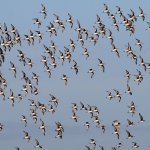Every May and June, the grasslands, coastlines, and Arctic tundra of the United States and Canada fill with shorebirds. Once they build their nests and hatch their young, it is already time to embark to the coasts of the Neotropics – the adults returning to familiar ground and the juveniles making the journey for the first time. They undertake these flights to their non-breeding areas during hurricane season, when their stopover and wintering areas are at risk of being damaged or completely disappearing. The threats they face are caused by many factors, but extractive activities like shrimp farming can be one of them.
Shorebirds are adapted to coastal areas. When the tide goes out, it reveals vast mudflats and estuaries where thousands of shorebirds feed. When the tide rises, it floods these feeding areas again, sending the birds in search of a place to rest and take refuge. It is in this convergence between the coast and dry land that these shorebirds cross paths with shrimp producers that export their products to the United States, Canada, and Europe. A total of 67,384 hectares (~166,510 acres) in Central America have been contracted to the shrimp industry, and approximately 44,320 hectares (~109,517 acres) of these are currently in production.
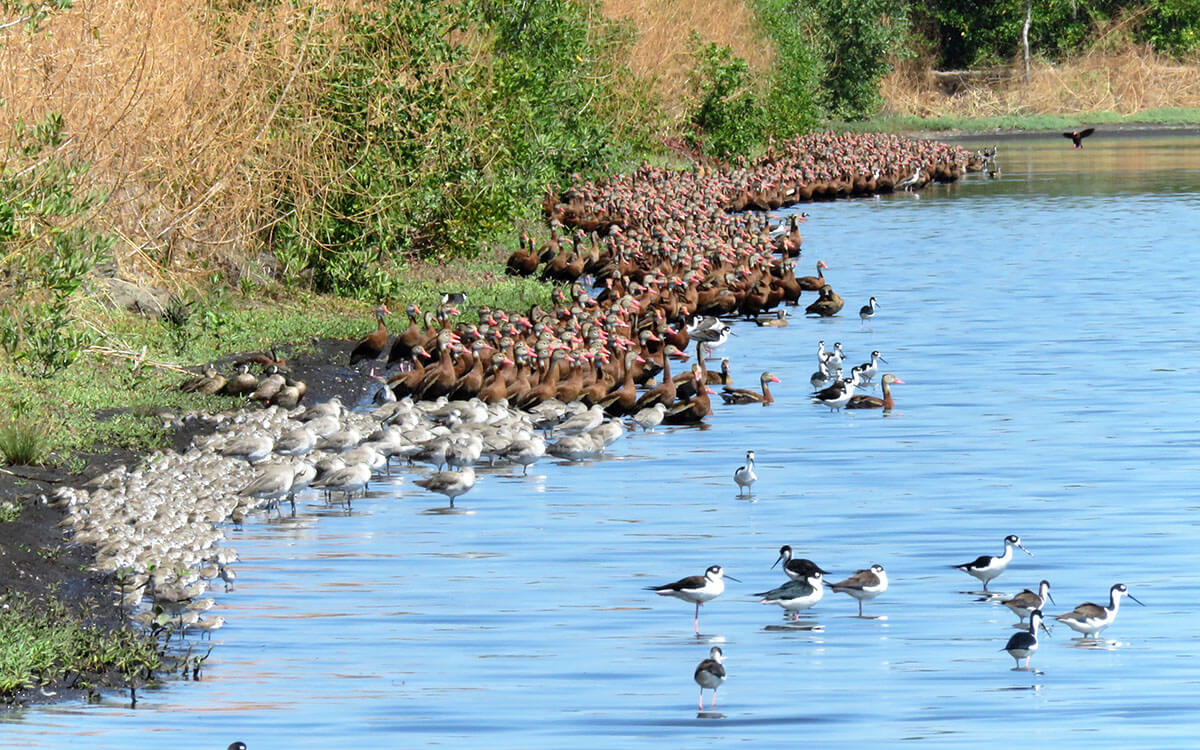
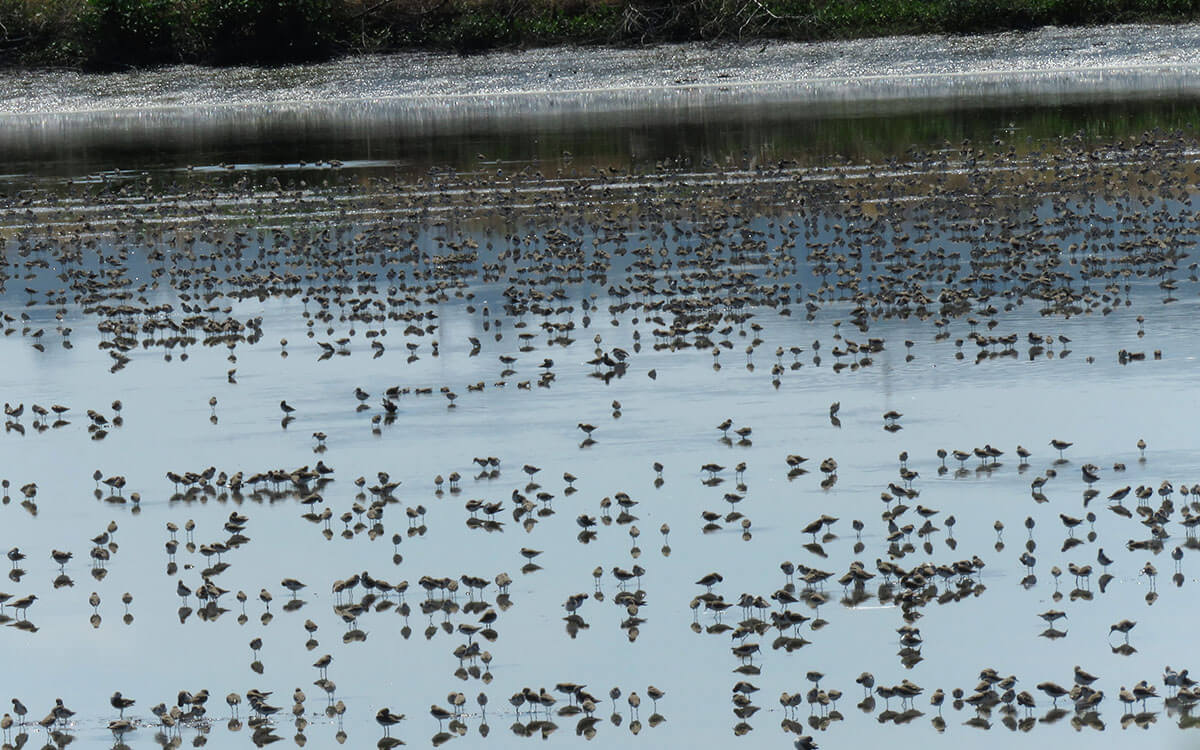
Left: A mixed flock of shorebirds shares a shrimp pond with Black-bellied Whistling Ducks (Dendrocygna autumnalis). Right: A flock of shorebirds roosting in a shrimp pond. Photos: Salvadora Morales.
In the last four years, the Quetzalli Nicaragua team has been generating a greater understanding of how shorebirds use shrimp farms. Large numbers of shorebirds have been observed using the dikes between shrimp ponds. It has been confirmed that recently harvested shrimp ponds provide a key ephemeral food source and roosting area. Today in Nicaragua, shrimp farms support 32% of the population of Wilson’s Plovers (Charadrius wilsonia), 2.8% of Whimbrels (Numenius phaeopus), 4.4% of Semipalmated Sandpipers (Calidris pusilla), 2.3% of Willets (Tringa semipalmata), and hundreds of individuals of other species. At least 14 species that regularly use shrimp farms are experiencing population declines, and one species – Semipalmated Sandpiper – is listed as Near Threatened.
This data drives us to work with the shrimp industry to identify and implement urgently needed Best Practices for shorebird friendly production methods and sustainable development models. Not only at the internal level for each shrimp farm, but also at a level that encompasses the habitat that surrounds them – particularly the remnant natural salt flats, which have been the most impacted habitat and used to provide potential roosting areas.
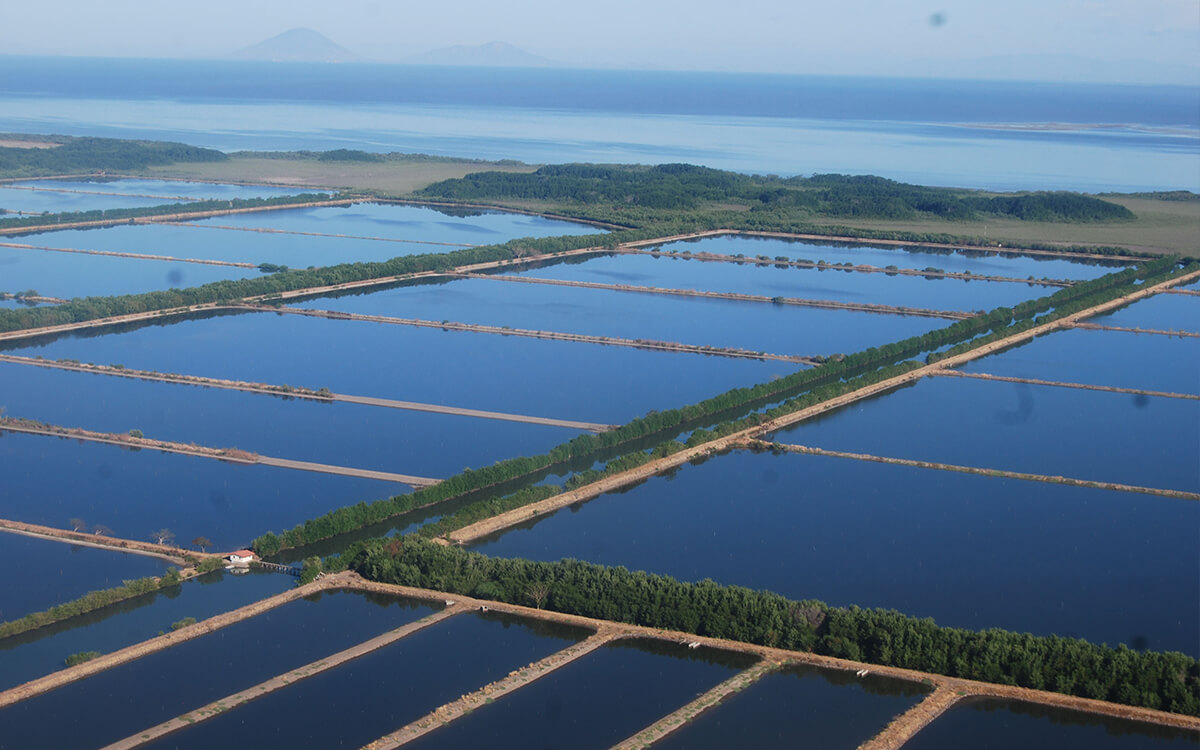
Shrimp aquaculture in the Gulf of Fonseca. Photo: Jose Urteaga.
To identify prospects for collaboration with shrimp farms, we came up with a specific question: What does a shrimp producer gain by protecting shorebirds?
Joaquín Romero, Environmental Manager of the shrimp company Grupo Granjas Marinas in Honduras, shared his perspective. “As producers, we need to consider that shorebirds do not represent a single negative impact on our production activities. They are part of a new balance within these artificial wetlands recognized by the Ramsar Convention, and they represent a potential opportunity to develop ecotourism activities in the area.”
Another company in Honduras, Salinera Santa Alejandra, produces shrimp between June and December, which coincides with the breeding season of two species of shorebirds that nest on the dikes between their shrimp ponds. “For Salina Santa Alejandra,” said owner Julia Salazar, “they are an additional attraction, and they are indicators of our own quality. We protect them, and we study and monitor the nests.”
This perspective seems promising for involving producers in concrete actions to diminish the disturbance that shorebirds currently face in active production areas. Alberto Obregón, Best Practices Manager at SeaJoy-Cooke, expressed that “from the corporate principles of the SeaJoy-Cook Group, which as farms in Nicaragua and Honduras, protecting birds means maintaining a harmonious balance between our production system and its coastal marine environment, and contributes to maintaining the ecological balance of the ecosystem.”
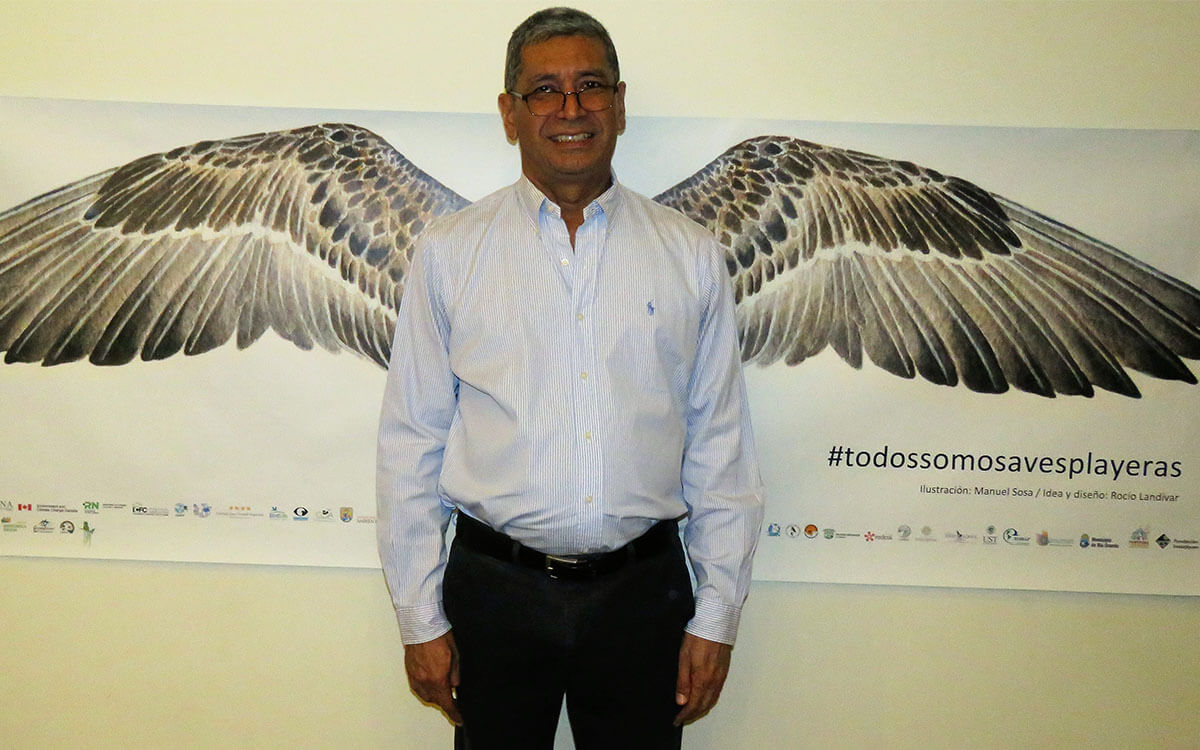

Left: The General Manager of SeaJoy poses with the #WeAreAllShorebirds wings. Right: Julia Salazar, owner of Salinera Santa Alejandra, observing shorebirds on a dike between ponds. Photos: Salvadora Morales.
Obregón addressed another important point: that by demonstrating a commitment to protecting birds, their company maintains a level of compliance as an environmentally friendly company, which allows them to access the most demanding markets for premium quality farmed shrimp. He said that “today, globalization is affecting all of us, and there are more and more incidences of climate change impacting life on earth. Large companies committed to the natural environment are convinced that the only way to stop this process is to engage in balanced production practices, taking care to not alter natural and ecological processes. Cooke Aquaculture is committed to continue promoting – both internally and outside our areas of production – the protection, care, and harmonious relationship between the flora and fauna that rely on each of our properties.”
WHSRN and local partners are working to develop concrete actions at different levels within the industry to promote shorebird-friendly shrimp.
Cover Photo: Aerial photo of shrimp aquaculture in the Gulf of Fonseca. Photo: Jose Urteaga.





